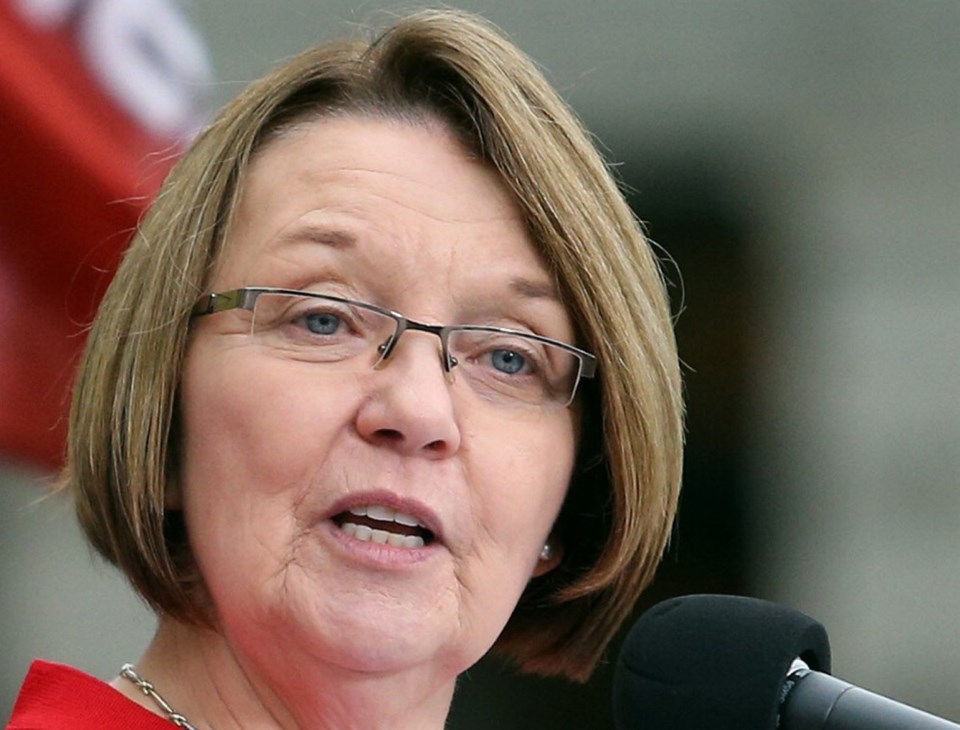The B.C. government’s plans to divert surplus WorkSafe B.C. funds back to employers has drawn heavy criticism from unions and the Opposition who say that money would be better spent increasing disability compensation for injured workers or beefing up safety inspections to prevent injuries in the first place.
The government announced plans, if re-elected on May 9, to amend the Workers Compensation Act so that it would require WorkSafe to return funds to employers when it has a surplus of contributions from employers in the accident fund.
Shirley Bond, minister of jobs, tourism and skills training and responsible for labour, said WorkSafe has more assets than liabilities in the accident fund and the current legislation does not provide direction on how to manage the surplus.
Aaron Aerts, B.C. economist for the Canadian Federation of Independent Business said it has been meeting with WorkSafe over the last year to raise concerns about the large surplus. “We really saw the trend going towards a ballooning fund and that gave us some cause for concern because obviously that’s employers money going into it,” Aerts said.
In 2015, the assets exceeding liabilities in the fund were $4.5 billion, with an asset to liability ratio of 138 per cent, Aerts said.
The government did not give figures for the surplus or how much could be returned to businesses.
NDP MLA Shane Simpson, the party’s spokesman for labour and jobs, said the B.C. government is the province’s largest employer so it will reap the largest benefit from this plan at the expense of injured workers.
“The government for 15 years has been eroding services to injured workers whether it was reducing loss of income, pensions, reducing the way that people are supported,” Simpson said. “So if you have this extra money, how come you’re not improving services to injured workers that we already know are not adequate instead of giving this money back?”
Simpson said injured workers have to go through a lengthy process for compensation after a workplace injury or have to appeal when compensation is denied.
In 2002, the government under Premier Gordon Campbell announced significant reforms to the Workers Compensation Act, which slashed its budget by 12 per cent and resulted in the closing of several WorkSafe offices. Compensation benefits for people with work-related injuries or illnesses were changed from 75 per cent of gross salary to 90 per cent of net salary. For workers earning $40,000 a year, this meant a benefit reduction of about $225 per month.
Stephen Hunt, director of United Steelworkers District 3, who spent six years as labour representative on the WorkSafe board, said the B.C. Liberal plan will return money to the party’s biggest donors “on the backs of the workers who, unfortunately, need the system. “When the [WorkSafe B.C.] board plays with numbers and reducing costs for employers it doesn’t make workplaces any safer,” Hunt said.
Irene Lanzinger, president of the B.C. Federation of Labour, said she’s “shocked and appalled” by the move. “Why are we giving this money back to employers when there are so many areas both on the compensation side and the prevention side that need attention?” Lanzinger asked. “This is the government giving a gift to employers at the expense of healthy and safe workplaces and compensation for injured workers.”
WorkSafe disputes that it is short-staffed or conducting is fewer inspections than in 2001, before the Campbell government’s cuts to WorkSafe B.C. the following year.
In 2001, there were 28,599 inspection reports. Inspection reports dropped to 15,941 in 2004 but reached 41,589 in 2016.
There were 201 prevention and investigation officers budgeted. That fell to 180 in 2004 but in 2016, there were 296 officers budgeted, which WorkSafe says is the most officers at any time in its history.
“As well 2016 had the fewest number of traumatic injuries over the past decade. Since 1990, the rate of work-related deaths due to traumatic injuries has declined by 72 per cent,” said WorkSafe B.C. spokesman Scott McCloy.
Bond said in a statement: “Employers fund the workers’ compensation system in our province and we think their money should be returned to them when the system is over-funded.” She said the move will benefit the small businesses that help drive growth and job creation. “This is about striking a balance to have the funds needed to help injured workers and their families now and into the future while limiting volatility in premiums that employers have to pay.”
The government said premiums have declined steadily since 2000 because the provincial workplace injury rate has declined.



